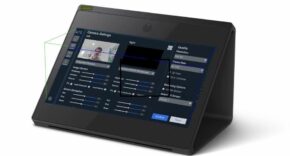
Healthcare is one of the industries undergoing many changes due to digital transformation.
There are several reasons for this, such as the need to modernize existing systems as well as address the challenges that have emerged with the pandemic. Thus, the services of a healthcare software development company are increasingly becoming a necessity for many medical institutions.
The main advantages of implementing innovative solutions and modern software in the healthcare industry include:
- Reducing the costs of medical organizations due to the automation of many routine tasks
- Increasing accessibility and decreasing the cost of medical services for patients
- Improving the quality of patient care, as well as early diagnosis of diseases
- Ability to use predictive models to assess risks for each patient
- Medical institutions can get insights and make data-driven decisions
- Improved communication between employees and different medical organizations
All this has a positive effect on the healthcare industry since implementing modern software makes existing systems more efficient. It also helps reduce expenses and removes many barriers to interaction and communication between healthcare professionals, doctors, and patients. Thus, the task of any software in healthcare is to give the desired result, cope with the challenges and problems that arise, and make services more accessible.
Let’s take a closer look at some popular ways software is used in the healthcare industry.
Types Of Software For Healthcare
Electronic Health Records
EHR (Electronic Health Record) solutions are among the most popular types of software in the healthcare industry.
Conceptually, EHRs are similar to CRMs in terms of how they work. However, the main reason and difference why this type of software is so important for medical institutions and is used instead of traditional CRM is the adaptation of EHR to the specific needs of medical institutions.
Among the purposes of Electronic Health Record systems is patients’ data collection, such as medical history, medications they take, etc. In addition, these systems often include a financial module for billing and payment and even a patient portal where they can access their data and medical records.
EHR is a comprehensive solution that includes other types of software, such as:
- Electronic Patient Record. EPR is used to store and process patient information by medical institutions.
- Electronic Medical Record. EMR allows you to securely store data regarding patient treatment, drug names and dosages, scheduled procedures, etc.
mHealth
Mobile health apps are another popular type of software. As smartphones have become commonplace in our daily lives, mobile platform solutions are gaining ground to provide easy access to medical services.
Medical apps usually have an intuitive interface to be friendly to different types of users. With mHealth solutions, patients can plan and schedule doctor appointments, conduct virtual consultations, pay medical bills, and access a range of telemedicine services, depending on the institution.
One of the advantages of mobile applications is the ability to integrate them with EMR/EHR systems, which greatly simplifies things for both medical staff and patients.
With fast access to the data you need, healthcare organizations, clinicians, and patients can enjoy significant benefits when it comes to treatment, access to services, and information sharing.
Thus, mHealth is an attractive option for many institutions, as mobile platform applications provide a positive impact on the healthcare industry.
Diagnosis
Another promising direction in healthcare software development is solutions for diagnosing patients. This type of software often involves artificial intelligence and machine learning algorithms.
With this approach, medical software can collect and analyze all available patient data, thereby increasing the chances of making a correct diagnosis. This can be especially useful when it comes to efforts to detect diseases at an early stage.
Remote Patient Monitoring
Investment in the development of the RPM solution has grown since the pandemic when medical facilities often could not cope with the workload and influx of patients. And here, technologies for remote medicine have become an excellent solution.
Such software provides interaction between doctors and patients without the need to visit clinics and hospitals. In addition, RPM solutions increase the depth of available information about the health status of patients based on the collected data, which allows remote diagnostics.
RPM technologies are often integrated with heart rate and blood pressure monitors, ECG, blood glucose and oxygen measurements, etc. This approach makes it possible to monitor in real-time, thereby allowing doctors to notice any deviations from the norm in time.
Thus, RPM devices contribute to better, more efficient medical care, as well as timely diagnosis.
Equipment Management
This type of software is especially valuable for many medical institutions. With flexible and personalized management systems that address the specific needs of a particular organization, healthcare facilities can eliminate manual inventory and equipment maintenance, making things much easier and keeping clinics running smoothly.
Final Thoughts
Medical institutions’ investment in software development is one of the consequences of the digital transformation that is now taking place in the world, as well as the need to respond and adapt to challenges such as a pandemic. That’s why healthcare software development is in an active phase nowadays.
With ever newer and more efficient approaches to treating patients, improving existing systems, and optimizing workflows, medical services are becoming more accessible and of higher quality. In addition, institutions can benefit from cost savings and improved workflow and management efficiency, making custom software an attractive option.
Learn more about healthcare software development at Ralabs.










